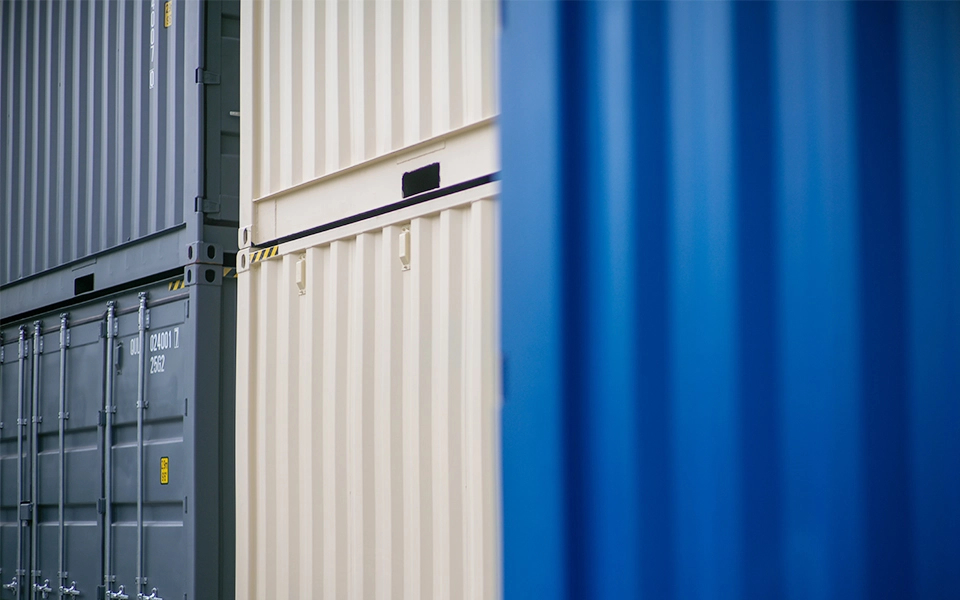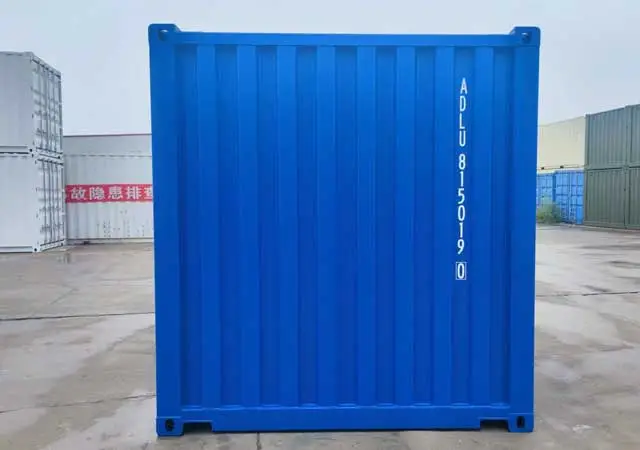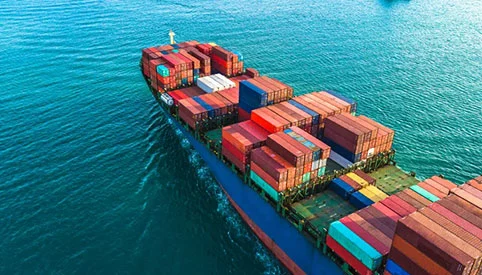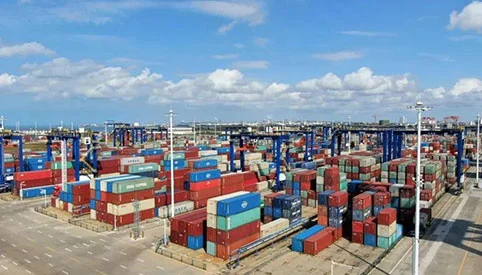2024/09/20
Shipping is the backbone of global trade, but it's not a one-size-fits-all affair. Two major players in the shipping world are dry bulk and container shipping, each serving distinct purposes and handling different types of cargo. But what's the difference between the two? Let's dive into the nitty-gritty of these shipping methods and explore their unique characteristics, advantages, and drawbacks.

What is Dry Bulk Shipping?
Dry bulk shipping involves transporting unpackaged bulk cargo like grains, coal, iron ore, and cement. These goods are carried in large quantities and are usually stored directly in the ship's hold without any packaging. Think of it as filling a giant cereal bowl with loose grains, but on a massive scale.
What is Container Shipping?
Container shipping, on the other hand, involves loading goods into standardized containers that can be easily transferred between ships, trucks, and trains. These containers are like Lego blocks, stacked and secured for transportation, carrying anything from electronics to frozen food.
Importance of Knowing the Difference
Understanding the difference between these two shipping methods is crucial for businesses involved in international trade. Choosing the right method can impact cost, efficiency, and even the safety of the cargo. Whether you’re shipping raw materials or finished products, knowing which method suits your needs is essential.
Definition and Key Characteristics
Dry bulk shipping refers to the transportation of bulk commodities that are not packaged, such as grains, coal, and metal ores. These goods are loaded directly into the ship’s holds and are generally homogeneous in nature. The ships used for this type of shipping are specifically designed to handle large volumes of dry bulk goods.
Types of Dry Bulk Cargo
Dry bulk cargo is categorized into two main types: major bulks and minor bulks.
Major Bulks (Iron Ore, Coal, Grains)
These are the heavy hitters of the dry bulk world, making up a significant portion of global dry bulk shipping. Iron ore, coal, and grains like wheat and corn are the primary commodities in this category.
Minor Bulks (Sugar, Cement, Fertilizers)
Minor bulks include a variety of other commodities like sugar, cement, and fertilizers. While they don't move in the same volumes as major bulks, they still play a vital role in international trade.
Types of Dry Bulk Ships
Different types of ships are used to transport dry bulk cargo, each designed for specific cargo sizes and types.
Handysize
These are the smallest dry bulk carriers, typically used for regional and coastal trade. They are versatile and can access ports with size restrictions.
Panamax
Panamax ships are designed to fit through the Panama Canal, making them ideal for routes that cross this vital waterway.
Capesize
The giants of the dry bulk world, Capesize ships are too large for the Panama and Suez Canals. They often transport iron ore and coal over long ocean routes.
How Dry Bulk Shipping Works
Dry bulk shipping involves several steps: the cargo is loaded directly into the ship's hold using cranes or conveyor belts, transported to its destination, and then unloaded using similar equipment. The entire process is efficient for large quantities of unpackaged goods but requires specialized infrastructure at both ends.
Definition and Key Characteristics
Container shipping uses standardized metal containers to transport a variety of goods, from electronics to frozen food. These containers protect cargo from damage and theft and make it easy to transfer goods between ships, trucks, and trains.
Types of Container Cargo
There are several types of container cargo, each suited to different types of goods.
Standard Containers (Dry Van)
These are the most common containers, used for general cargo that doesn't require temperature control.
Refrigerated Containers (Reefers)
Reefers are equipped with temperature control systems, making them ideal for transporting perishable goods like fruits, vegetables, and pharmaceuticals.
Specialized Containers (Open Top, Flat Rack)
Specialized containers are used for cargo that doesn't fit in standard containers, such as machinery, vehicles, or oversized goods.
Types of Container Ships
Like dry bulk ships, container ships come in various sizes, each suited to different routes and capacities.
Feeder Ships
These smaller ships transport containers between regional ports and larger, international ports.
Panamax and Post-Panamax
These ships are designed to navigate the Panama Canal, with Post-Panamax ships being larger and capable of carrying more containers.
Ultra Large Container Vessels (ULCV)
ULCVs are the behemoths of container shipping, carrying thousands of containers across major international routes.
How Container Shipping Works
The process starts with loading containers onto the ship using cranes. The containers are then stacked and secured for the journey. Upon arrival, cranes unload the containers onto trucks or trains for final delivery. This method is highly efficient, especially for mixed or fragile cargo.
Cargo Types and Packaging
Dry bulk shipping handles unpackaged, homogeneous goods like grains or minerals, while container shipping transports a wide variety of packaged goods, including electronics and clothing. The nature of the cargo dictates the shipping method used.
Ship Design and Structure
Dry bulk ships have large holds for loose cargo, while container ships have decks designed to stack standardized containers. The ship design reflects the type of cargo they carry.
Loading and Unloading Processes
Loading and unloading dry bulk cargo involves using conveyor belts or cranes to move loose goods, while container shipping uses cranes to lift and place entire containers. Container shipping is generally quicker and more streamlined.
Costs and Efficiency
Dry bulk shipping is cost-effective for large volumes of uniform cargo, while container shipping is more flexible but can be more expensive due to the need for containers and additional handling.
Environmental Impact
Both shipping methods have environmental implications, but container shipping typically has a smaller footprint due to better fuel efficiency and reduced cargo handling.
Advantages
Cost-effective for large volumes.
Efficient for homogeneous cargo.
Flexible ship sizes for different routes.
Disadvantages
Requires specialized infrastructure.
Not suitable for mixed or fragile goods.
Longer loading and unloading times.
Pros and Cons of Container Shipping
Advantages
Versatile for various cargo types.
Faster loading and unloading.
Better protection for cargo.
Disadvantages
Higher costs due to container handling.
Limited by container size.
Environmental impact from container production.
Factors to Consider
Choosing the right shipping method depends on several factors, including the type of cargo, destination, and cost constraints.
Choosing Based on Cargo Type
Dry bulk is ideal for raw materials, while container shipping is better for finished goods or mixed cargo.
Cost Considerations
If you're shipping large quantities of a single commodity, dry bulk is more economical. For smaller, diverse shipments, container shipping may be worth the extra cost.
Environmental Concerns
Container shipping generally has a lower environmental impact, but dry bulk shipping can be more efficient for certain routes and cargo types.
Misconception 1: Dry Bulk is Only for Heavy Cargo
While dry bulk is often used for heavy materials like iron ore, it also transports lighter goods like grains and fertilizers.
Misconception 2: Container Shipping is Always Cheaper
Container shipping can be more expensive due to container handling and transfer costs, especially for small shipments.
Understanding the difference between dry bulk and container shipping is essential for making informed decisions in global trade. Each method has its strengths and weaknesses, and the best choice depends on your specific needs and cargo type. Whether you're shipping raw materials or consumer goods, knowing the ins and outs of these shipping methods can save you time, money, and hassle.


